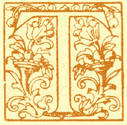
From, Beautiful Buildings in France & Belgium, Including many which have been destroyed during the war. Reproductions in Colour and Monochrome from rare old Prints and Drawings, by and after Prout, Boys, Coney, W. Callow, David Roberts, C. Wild and others, with descriptive notes, by C. Harrison Townsend, F.R.I.B.A.; New York: The Hubbell Publishing Co., 1916; pp. 152-155.
PARIS : LA SAINTE-CHAPELLE
(T. S. Boys)
 HE Sainte-Chapelle, as we know it to-day, is an altogether different building from that of our Plate, in which, indeed, Boys shows it undergoing one of its many restorations. This evidently was the work carried out upon it for so many years by the architect Lassus. The exterior staircase leading to the gallery or narthex of the upper church only, however, remained till Viollet-le-Duc’s time, who, in his turn, when acting as architect to the building, dealt with the whole of it in his accustomed manner. Eminent and justly admirable historian of architecture as was the great author of the “Dictionnaire Raisonné
154
de l’Architecture Française,” his many works of restoration, throughout France show, all too evidently, that those gifts of veneration, conservatism, and self-suppression, so necessary when dealing with ancient buildings and historic monuments of architecture, were not his. Even in his treatment of Mont St. Michel he did not, in his many years’ work there, lay so heavy a hand upon the old Castle as when dealing with the Sainte-Chapelle.
HE Sainte-Chapelle, as we know it to-day, is an altogether different building from that of our Plate, in which, indeed, Boys shows it undergoing one of its many restorations. This evidently was the work carried out upon it for so many years by the architect Lassus. The exterior staircase leading to the gallery or narthex of the upper church only, however, remained till Viollet-le-Duc’s time, who, in his turn, when acting as architect to the building, dealt with the whole of it in his accustomed manner. Eminent and justly admirable historian of architecture as was the great author of the “Dictionnaire Raisonné
154
de l’Architecture Française,” his many works of restoration, throughout France show, all too evidently, that those gifts of veneration, conservatism, and self-suppression, so necessary when dealing with ancient buildings and historic monuments of architecture, were not his. Even in his treatment of Mont St. Michel he did not, in his many years’ work there, lay so heavy a hand upon the old Castle as when dealing with the Sainte-Chapelle.
The original church was begun in 1242 or 1245, and was completed in 1247 — a surprisingly short time for a building of so much intricacy of detail. It was originally intended for the housing of the sacred relics brought by St. Louis from the Crusades. The stained glass in the upper chapel has been “restored” by Steinheil — even the rose-window, which dates from the XVth century — and with but poor result.
Copyright © 2007 by Elfinspell